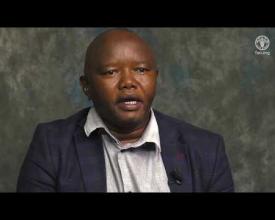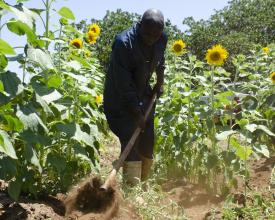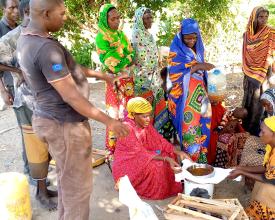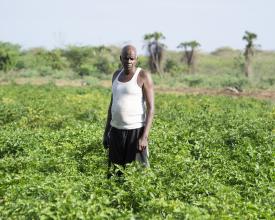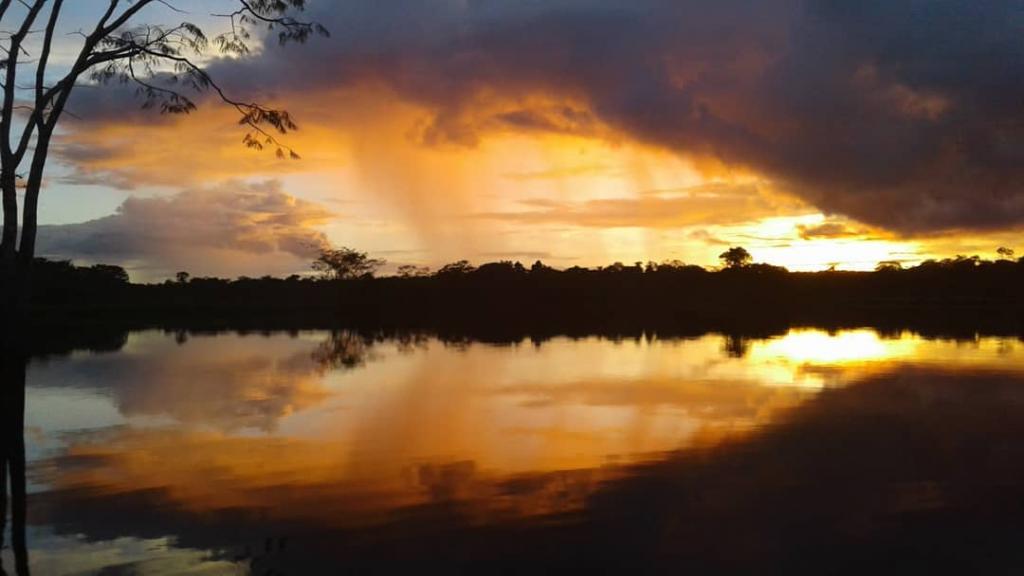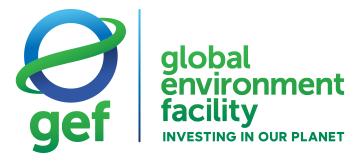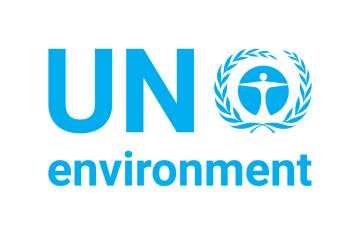
Establishing Policy and Regulatory Frameworks to Support Equitable Forest and Landscape Restoration and Sustainable Land Management in Kenya’s Tana Delta
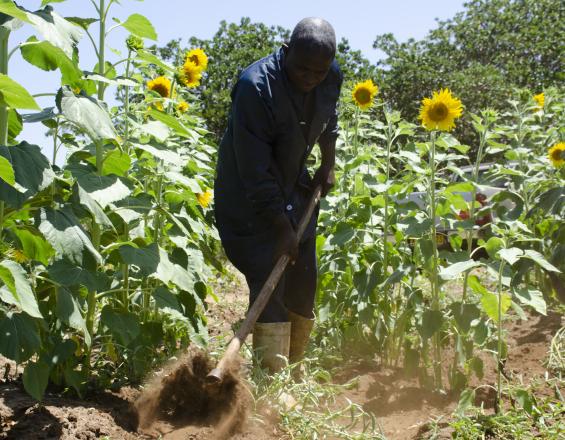
The Restoration Initiative’s (TRI) in Kenya Tana Delta has worked to facilitate the development of policy, governance, and regulatory frameworks that support coordinated and equitable forest landscape restoration (FLR) and sustainable land management. This includes advising and advocating for almost 20 policies and pieces of legislation, with eight being approved in both Tana River and Lamu Counties. To achieve these supportive policies and regulations, TRI worked to enhance public support for FLR at the national and county level with a robust communications strategy, to mainstream FLR into county budgetary processes through lobbying and advocacy, and to integrate FLR and sustainable land management into policies and planning processes by helping elaborate plans such as the Lamu and Tana River County Integrated Development Plans. The new FLR-supportive policy framework has ultimately brought in greater funding and pushed Kenya towards meeting its restoration goals.
TRI is a GEF-funded project
Contexte
Défis à relever
The major challenge TRI faced in Kenya’s Tana Delta is the prioritization of FLR. Although the project has worked to identify policy gaps and the county has funding, using those funds for implementation will not always be a priority for the county government. Because of local politics, many officials want to invest in policies that have overwhelming political support and will result in a vote, which may not line up with the project’s conservation and development goals. Additionally, with a recent change in governments, new officials may not view previously developed policies as a priority and therefore not promote them or pursue their implementation, even if they are overwhelmingly beneficial. However, with lobbying and advocacy efforts, local community support can be expanded and push officials to support these policies.
Emplacement
Traiter
Résumé du processus
Through the use of a robust communication plan and the mainstreaming of landscape restoration and sustainable land management into county budgets as well as county and national policies, TRI Kenya Tana Delta was able to create a policy, legal, and regulatory framework that not only supports restoration but also expands policy and finance capacities. The elaboration of policies allows restoration measures to be enacted and enforced, while the inclusion of restoration in county budgets ensures the outlined measures can be adequately implemented. The communication plan, then, is used to ensure local communities are supportive of the restoration policies and to influence mindsets, habits, and practices in favor of restoration. Together, these building blocks along with the resulting increase in county, national, and international investment, allow for the successful elaboration and implementation of FLR-based policies that in turn help local communities with benefits such as enough water in rivers and ecosystems restored.
Blocs de construction
Enhancing public support for landscape restoration and sustainable management at the county level
TRI developed a robust communication plan that included the innovative use of radio, banners, and outreach to successfully garner public support for FLR and sustainable land management. The plan included engaging in partnerships with local radio stations with translations into Swahili, which with far reach in rural villages, are more effective in influencing mindsets and practices related to restoration. TRI also took part in printing banners and flyers highlighting restoration-based policies and convening meetings and trainings, including training focused on strengthening the capacity of the Tana Delta Conservation Forum, which targeted community decision-makers and equipped them to identify policy issues and influence the county planning agendas. Additionally, TRI has created a YouTube Channel and worked to develop a far-reach and effective social media presence, which includes identifying local champions who speak on behalf of the project to better connect with local communities. Overall, TRI’s communication plan has been very successful in enhancing policy messages, helping aid enforcement, sensitizing members of the public, and calling for action.
Facteurs favorables
To successfully implement their communication plan, TRI needed local leaders willing and able to take part in radio shows and interviews. Without them, local outreach would not have been possible, and the communication plan would have lacked connection with local communities. Additionally, TRI was able to share information about restoration initiatives and policies by taking advantage of international environmental days with banners and printed materials that highlighted the need for restoration and sustainable land management.
Leçon apprise
The communication plan has shown how an outreach and advocacy strategy that targets communities using local champions, local languages, and local channels will ultimately be more successful in influencing mindsets, habits, and practices toward FLR and sustainable land management. By participating in local radio shows with local leaders speaking in Swahili, TRI has been better able to reach individuals living in rural villages with messages from people they trust and know the local context. As the eventual participants in restoration activities, local communities need to believe that FLR is beneficial and worth pursuing. Similarly, by communicating directly with local communities, TRI has been able to learn more about what their wants and priorities are. This allows the elaboration of policies to address local needs more accurately.
Mainstreaming landscape restoration and sustainable land management into county budgetary processes
TRI Kenya Tana Delta has worked to mainstream landscape restoration and sustainable land management into county budgetary processes by training members from Community Forest Associations (CFAs) to advocate and lobby for prioritizing FLR in county budgets and by submitting a memorandum through the Tana Delta Conservation Network to influence Tana River County’s fiscal strategy papers. The recommendations on prioritizing FLR in Tana River County’s budget included in the memorandum have since been taken up by the County. Similarly, Lamu county has adopted higher restoration targets in its budget as a result of TRI’s advocacy. This uptake in budget recommendations also follows the capacity building of 34 members drawn from all five CFAs on advocacy and lobbying, including how to engage in county budgetary processes and consultations. The project plans to further train more members of the CFAs to enhance the prioritization of FLR and sustainable land management in county budgets through community participation and empowerment.
Facteurs favorables
TRI Kenya Tana Delta was able to help mainstream FLR and sustainable land management in county budgetary processes because CFA members were enthusiastic in learning how to engage in lobbying and advocacy and the trainings were well designed to adequately prepare them for pursuing budget improvements. The project also benefitted from local governments that had the political will to set high targets for restoration and ensure FLR was supported by their budgets.
Leçon apprise
From the work TRI Kenya Tana Delta has undertaken to help mainstream landscape restoration and sustainable land management into budgetary processes and policies, the project has seen that by building the capacity of local leaders to lobby local government and engage in consistent advocacy, the counties can enact budgets that prioritize restoration and provide for the pursual of higher restoration targets. By pursuing the prioritization of FLR and pushing county governments to place value in sustainable land management, it is possible to ensure county funding, whether from the national government or other sources, is used in the implementation of FLR policies and activities. The inclusion of FLR and sustainable land management in county budgetary processes can also lead to targets exceeding those set at the national level, further allowing the counties to increase their contributions to national restoration commitments.
Integrating landscape restoration and sustainable land management into policies and planning processes to enhance conservation and sustainable production.
To contribute to a policy framework that supports landscape restoration, TRI Kenya Tana Delta also worked on integrating restoration and sustainable land management into county policies such as participatory forest management plans (PFMPS) and village restoration action plans as well as national legislation such as the Forest and Landscape Restoration Implementation Action Plan (FOLAREP) and the physical and Land Use Planning Act 2019. TRI helped develop the four PFMPS, both at the county and national level, which outline forest management priorities, how programs will be implemented, and the different roles stakeholders will undertake, by providing technical input and helping convene stakeholders. These plans have been completed and signed by either the Kenya Forest Service or county governments and will be launched later this year. FOLAREP, a major national policy that will advance FLR in Kenya, has been aided by TRI Kenya Tana Delta, which funded the participation of stakeholders in consultations and validation forums hosted by the Kenya Forest Service. In all, TRI has contributed significantly to FLR-focused and -supportive frameworks and continues to facilitate the elaboration of future policies.
Facteurs favorables
To successfully develop policies and integrate landscape restoration and sustainable land management within them, TRI greatly benefitted from consultations and workshops that gathered information from a diverse set of stakeholders, including local leaders and national agencies such as the Kenya Forest Service, on restoration opportunities, priorities, and recommendations. Without this information gathering and convening of parties, the policies would struggle through the validation process and would be unlikely to garner enough political will.
Leçon apprise
Through its contributions to the elaboration of county and national level policies, TRI Kenya Tana Delta learned more about how the process of elaborating and validating policies in the Tana River and Lamu counties works and what barriers exist. Now that the project has taken part in the development of multiple policies and regulations, there is a pathway outlined on the most efficient way to successfully enact policies, and the policies themselves make it easier for future restoration-based policies to be pursued. Additionally, through the integration of FLR into policies, TRI has further grown its understanding of the ways restoration and sustainable land management can fit into the various legal and regulatory frameworks that exist and are continuously evolving.
Impacts
With policy and governance frameworks that are supportive of equitable forest landscape restoration and sustainable land management efforts, TRI’s Kenya Tana Delta project has brought in greater funding for the implementation of these policies. Establishing FLR-based policies has ensured the counties meet the World Bank’s Financing Locally Led Climate Action (FLLoCA) program’s financing requirements. With this additional investment from the World Bank, the counties will have the necessary funding for FLR policy implementation and have greater capacity for further policy development. In this way, the project will likely result in a triggering effect that promotes a greater up-take of policies prioritizing FLR and sustainable land management.
Additionally, with policies in place that support FLR and sustainable land management, the counties will actively participate in restoration and contribute towards meeting Kenya’s Bonn Challenge restoration commitments of reaching 10.6 million hectares restored.
Bénéficiaires
The beneficiaries are local communities residing in areas whose landscapes are being restored. With county governments acting as custodians, the new policies will ensure communities have enough water in their rivers and ecosystems are restored.
Objectifs de développement durable
Histoire
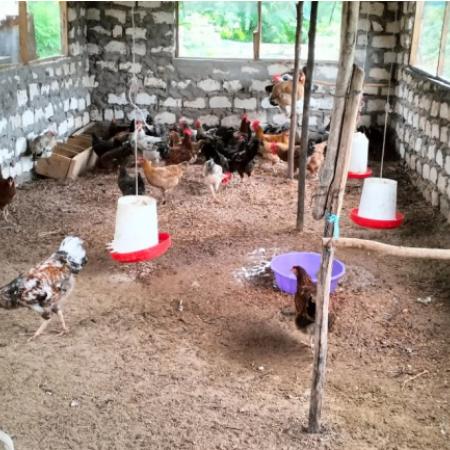
Amalie Mara Miyesa is a 42-year old mother of two children from Idsowe village, in Tana Delta, a member of a local community group-the Tana Delta Conservation Network (TDCN) and among the beneficiary households.
“My life took a u-turn in early 2022 when I was introduced to TRI Tana project,” said Amalie. “My greatest encounter as a beneficiary was during an exchange visit to Baringo County in northern Kenya. We learned about restoration, development of environmental action plans, and development of value chains that promote sustainable use of natural resources to mitigate adverse environmental impacts on the landscape and generate positive results for nature and communities in arid and semi-arid lands.”
“This exposure gave me the drive to start this poultry enterprise to enable me get some income to supplement the little money I used to get from my husband,” said Amalie, as she pointed at the poultry farm. “Thanks to the partnership between Nature Kenya, and TDCN, I have a 352 egg capacity incubator,” she said. ‘Initially, I used to hatch eggs using a locally fabricated incubator, the hatching percentage was very low as most of the eggs were destroyed in the process due to unregulated heat. However, with the new machine, hatching percentage has tremendously increased to more than 75% and I now enjoy higher returns.”
“Life was very difficult before starting the poultry business. The money I used to get from my husband was not sufficient to meet my needs as a woman, and those of my family. In most cases I had to request for support from my family and friends and this too was not sustainable as sometimes my requests were ignored,” narrated Amalie. “Poultry farming has enabled me to do wonders within a short period of time. My main source of income is from the sale of chicken, eggs, and chicks. I am able to pay full year’s school fee for my daughter and niece who are in secondary school, besides meeting other expenses such as food and clothing for the family.”
Poultry farming is environmentally friendly and generates multiple community benefits. Amalie has planted numerous trees in her farm as manure from the poultry is used to provide nutrients crops. Out of interest in planting indigenous trees, Amalia has established a tree nursery to raise seedlings for restoring degraded land and adjacent landscapes and intends to install a bio-gas plant to generate energy and reduce household fuel consumption.

